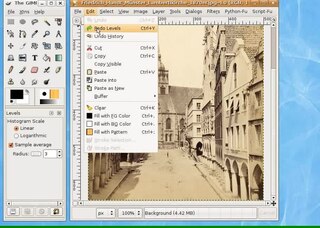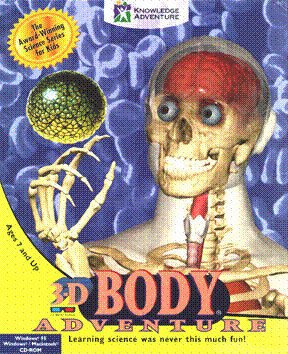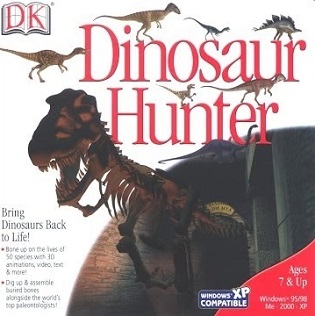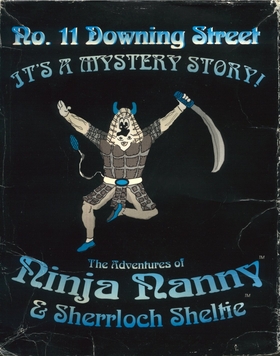Multimedia is a form of communication that uses a combination of different content forms such as writing, audio, images, animations, or video into a single interactive presentation, in contrast to traditional mass media, such as printed material or audio recordings, which features little to no interaction between users. Popular examples of multimedia include video podcasts, audio slideshows and animated videos. Multimedia also contains the principles and application of effective interactive communication such as the building blocks of software, hardware, and other technologies. The five main building blocks of multimedia are text, image, audio, video, and animation.

Microsoft Flight Simulator is a series of flight simulator programs for MS-DOS, Classic Mac OS and Microsoft Windows operating systems. It was an early product in the Microsoft application portfolio and differed significantly from Microsoft's other software, which was largely business-oriented. As of November 2022, Microsoft Flight Simulator is the longest-running software product line for Microsoft, predating Windows by three years. Microsoft Flight Simulator is one of the longest-running PC video game series of all time.
An application program is a computer program designed to carry out a specific task other than one relating to the operation of the computer itself, typically to be used by end-users. Word processors, media players, and accounting software are examples. The collective noun "application software" refers to all applications collectively. The other principal classifications of software are system software, relating to the operation of the computer, and utility software ("utilities").

A screencast is a digital recording of computer screen output, also known as a video screen capture or a screen recording, often containing audio narration. The term screencast compares with the related term screenshot; whereas screenshot generates a single picture of a computer screen, a screencast is essentially a movie of the changes over time that a user sees on a computer screen, that can be enhanced with audio narration and captions.

Microsoft Home was a line of software applications and personal hardware products published by Microsoft. Microsoft Home software titles first appeared in the middle of 1993. These applications were designed to bring multimedia to Microsoft Windows and Macintosh personal computers. With more than 60 products available under the Microsoft Home brand by 1994, the company's push into the consumer market took off. Microsoft Plus!, an add-on enhancement package for Windows, continued until the Windows XP era. The range of home software catered for many different consumer interests from gaming with Microsoft Arcade and Entertainment Packs to reference titles such as Microsoft Encarta, Bookshelf and Cinemania. Shortly after the release of Microsoft Windows 95, the company began to reduce the price of Microsoft Home products and by the rise of the World Wide Web by 1998, Microsoft began to phase out the line of software.

Living Books is a series of interactive read-along adventures aimed at children aged 3–9. Created by Mark Schlichting, the series was mostly developed by Living Books for CD-ROM and published by Broderbund for Mac OS and Microsoft Windows. Two decades after the original release, the series was re-released by Wanderful Interactive Storybook for iOS and Android.

Star Warped is a first-person point-and-click adventure video game that parodies the Star Wars universe, specifically the original trilogy released between 1977 and 1983: Star Wars, The Empire Strikes Back, and Return of the Jedi. It was created by Parroty Interactive, which was a division of the game's publisher, Palladium Interactive. Star Warped was released in the United States and Canada, for both Windows PC and Macintosh, in late 1997 as a follow-up to their debut Myst parody, Pyst. The game is no longer in release, as Parroty's parent company folded after being bought by The Learning Company in 1998. The game invited players to "Be seduced by the power of the Dork Side". Star Warped received mixed reviews from critics: some praised the game's variety, originality, and humor, while others dismissed it as lazy, unfunny, and dull.

Star Wars: DroidWorks is a 1998 edutainment computer game and the premiere title from LucasArts subsidiary Lucas Learning. It uses the same engine as LucasArts' previous title Star Wars: Jedi Knight. The creators aimed to create a game that would be both appealing and nonviolent. The game's original release date was moved up by months, which resulted in the development team cutting some planned game features.
Monsoon Multimedia was a company that manufactured, developed and sold video streaming and place-shifting devices that allowed consumers to view and control live television on PCs connected to a local (home) network or remotely from a broadband-connected PC or mobile phone. It was one of 5 major transformations initiated by Prabhat Jain, a Silicon Valley entrepreneur with 5 undergraduate and post graduate engineering degrees from Cal Berkeley and Univ of Vienna, Austria. On the even of Cisco acquiring Monsoon in 2017, EchoStar, the new parent of Sling sued Monsoon for patent infringement, having obtained confidential information about the date of the acquisition by Cisco from a Monsoon employee under murky circumstances. Monsoon settled the lawsuit by agreeing not to sell its products in the USA simply because it did not have the legal funds to fight mighty Echostar's legal maneuvers. EchoStar thus successfully removed its only competitor from the market place. This meant Monsoon's death knell.

MicrosoftEncarta is a discontinued digital multimedia encyclopedia published by Microsoft from 1993 to 2009. Originally sold on CD-ROM or DVD, it was also available online via annual subscription, although later articles could also be viewed for free online with advertisements. By 2008, the complete English version, Encarta Premium, consisted of more than 62,000 articles, numerous photos and illustrations, music clips, videos, interactive content, timelines, maps, atlases and homework tools.

RealNetworks, Inc. is a provider of artificial intelligence and computer vision based products. RealNetworks was a pioneer in Internet streaming software and services. They are based in Seattle, Washington, United States. The company also provides subscription-based online entertainment services and mobile entertainment and messaging services.
The Magic School Bus is a series of educational software video games developed by Music Pen and published by Microsoft via their Microsoft Home brand. The interactive adventures are part of the larger franchise and based with The Magic School Bus original series books and public television series.

Disney's Animated Storybook is a point-and-click adventure interactive storybook video game series based on Walt Disney feature animations and Pixar films that were released throughout the 1990s. They were published by Disney Interactive for personal computers for children ages four to eight years old. Starting from 1994, most of the entries in the series were developed by Media Station. They have the same plots as their respective films, though abridged due to the limited medium.

Eastern Mind: The Lost Souls of Tong Nou is a point-and-click adventure game by Japanese artist Osamu Sato. The plot follows a man named Rin whose soul is taken by the island of Tong-Nou. Rin travels to Tong-Nou to fulfill the lives of nine creatures and regain his soul. Whenever Rin dies, the player chooses what creature Rin will be reincarnated into.
Microsoft Art Gallery is a 1993 educational and interactive guide for the London National Gallery published by Microsoft.

3-D Dinosaur Adventure is an educational video game by Knowledge Adventure released on CD-ROM for MS-DOS compatible operating systems in 1993. Versions for Macintosh and Windows 3.x were published in 1996. A 1997 re-release and an updated version for Macintosh and Microsoft Windows is titled 3-D Dinosaur Adventure: Anniversary Edition.

3-D Body Adventure is a 1994 educational video game developed by Knowledge Adventure and published by Levande Böcker i Norden for MS-DOS, Mac OS, Microsoft Windows.

Eyewitness Dinosaur Hunter is an educational video game in the Eyewitness Virtual Reality series, developed by DK Multimedia and released for Windows in 1996.
Zaark and the Night Team is a 1995 series of two multimedia educational CD-ROMs subtitled: The Quest for Patterns and The Search for Symbols. It was developed by EduConcept and published by Maxis as part of their brand Software Toys For Kids.

The Adventures of Ninja Nanny & Sherrloch Sheltie: No. 11 Downing Street is a 1993 game by Silicon Alley for Windows 3.0 systems, and is an interactive fiction title with multimedia elements integrated into the text. Despite its marketing as an "educational" game, Ninja Nanny became notable after its release for its unusual and nonsensical content.














